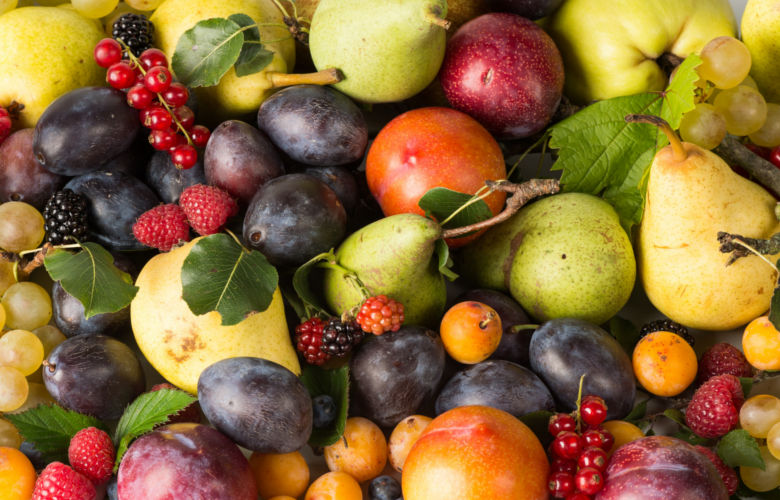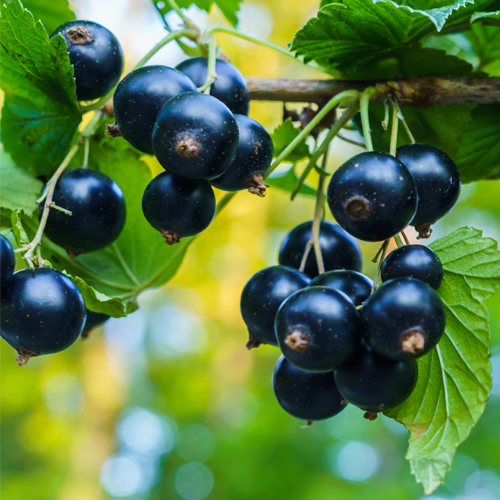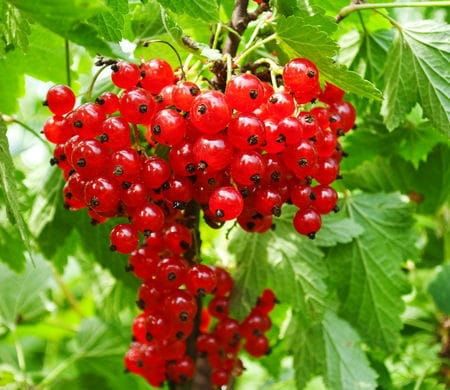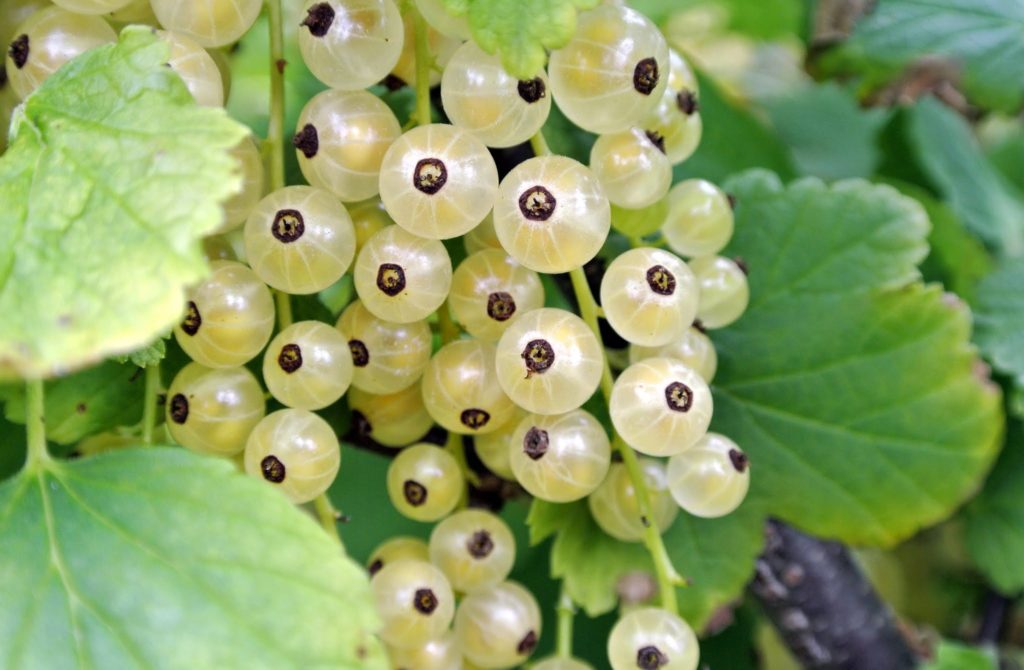After the forgotten and unappreciated vegetables, the time has come to look into fruits. You wont believe how many of them are skipped during food shopping , or even unrecognizable by so many people. We all love gorgeous looking fruits, the fancy ones, maybe some of the tropical ones, bot most of the times, we do not have what treasures we have growing locally. So, today we will look into some delicious fruits, highly nutritious and most of all, so beneficial to us.
Lets go!
Apples

It is probably the most popular and most accessible fruit . And I must confess, they are my absolute favorite. Humble apple, nothing better in the whole world. They are available practically all year round. Due to their juiciness and flavor profile , they go well with savory and sweet dishes. There are many advantages to consuming these fruits. One apple a day is a portion of vitamins and antioxidants. Apples contain a lot of vitamins: A, E, K, the entire B group. It also contains a powerful dose of fiber that improves metabolism. All scientists emphasize that fruit is beautifully packaged water. Apples, like other fruits, contain about 80-90% of it. However, the energy value as well as the content of individual fruits are different.
For example, 100 g of apples contain: 0.2-0.4% protein, 0.3-0.5% fats, 10-16% sugars, 4-12% acids, 0.1-1.5% pectin’s, 0, 1-1.1 g of polyphenols and potassium, phosphorus, calcium, magnesium, sulfur, iron. At this point, the nutritional values of old apple varieties should be emphasized. They are characterized by a high content of antioxidant compounds such as phenols, anthocyanins, vitamin C and sugars. The content of Vitamin C varies from 26.52 milligrams in 100 g of fruit, to even high level as 189.08 milligrams per 100 g. It should be remembered that during the heat treatment of apples, water-soluble vitamins are decomposed. Apples are low on the glycemic index because fructose and other sugars are released slowly from the fiber, causing the consumer’s blood sugar content to rise slowly. Therefore, they can be consumed by people suffering from diabetes or hypoglycemia. This does not apply to apple juice, which rises on the glycemic index after being separated from fiber . they are truly the “Super Fruits”?
- Eaten whole, with the skin or in the form of squeezed juice – regulate metabolism.
- The content of fiber in apple allows you to regulate the level of cholesterol in the body.
- fiber content in apples allows you to regulate blood sugar levels, which reduces the risk of developing type II diabetes. Raw apples with the skin, and the squeezed juice and carrots, have a great effect on people suffering from these symptoms of a lack of homeostasis in their bodies.
- There is a significant amount of polyphenols in apples (including quercetin flavone), which in numerous studies show high antioxidant, anti-cancer, anti-inflammatory, anti-atherosclerotic activity, inhibiting platelet aggregation, cleansing the body, and lowering blood pressure.
- Polyphenols have a protective effect on cells, preventing the formation of oxidative stress, which will be important in all inflammatory diseases, in atherosclerosis and diabetes.
- Quercetin has a protective effect on antioxidant vitamins, increasing their absorption and inhibiting breakdown; Quercetin protects against the appearance of cataracts in people suffering from diabetes.
- Hardly anyone has heard that the quercetin, in apples also inhibits the secretion of histamine – that is, it has an antiallergic effect (in drugs in combination with calcium salts).
Figs
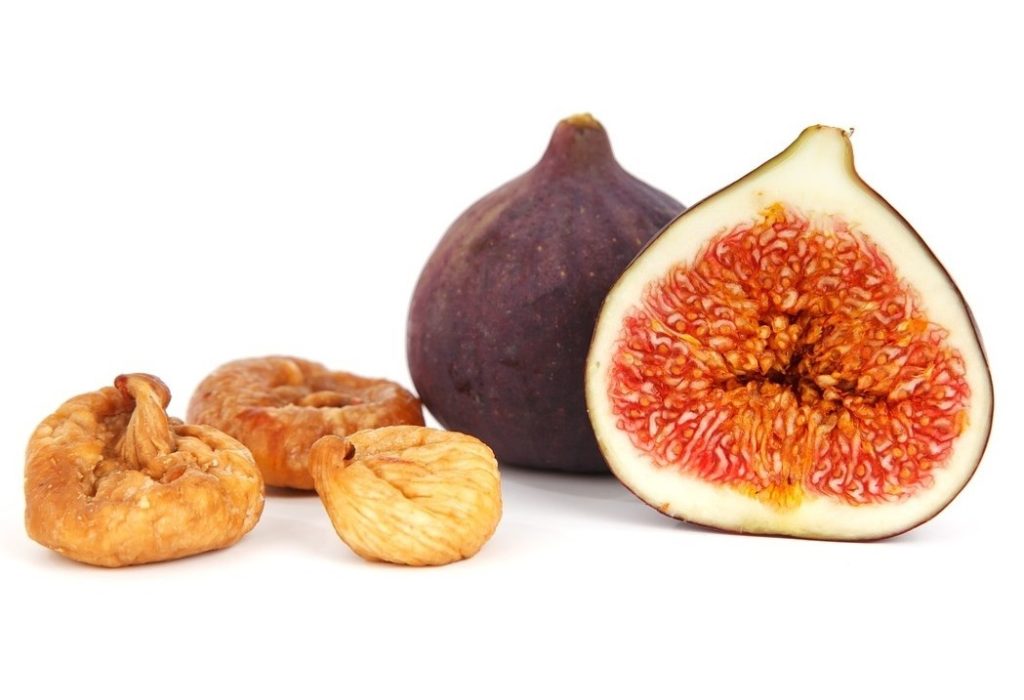
These fruits exert many beneficial effects – antioxidant, thanks to the content of compounds that scavenge free radicals, thus protecting cells against damage; anti-inflammatory; antifungal; anti-parasitic; anti-cancer. In books on herbal medicine, they are described as a remedy for constipation, dysentery, and enteritis.
Dried figs are one of the most nutritious fruits prepared in this way – they are a source of vitamins (B1, B3, B6) and minerals (potassium, calcium, magnesium – important in the treatment of hypertension). Both dried and fresh fruits are a rich source of fiber and polyphenols (compounds responsible for antioxidant properties, i.e., protecting cells from damage). Interestingly, red wine and black tea, known to be high in polyphenols, contain less polyphenols than figs. These compounds are mainly in the peel, so it is definitely worth eating the ripe fruit whole. The flavonoids found in figs: luteolin and quercetin, compounds with a strong anti-inflammatory effect, also have a beneficial effect on the body.
Among all fruits, dried figs have the highest calcium content. 100 g of dried fruit contains as much as 162 mg (although other sources say even more than 200 mg) of this valuable element for bones. It’s almost the same as in a glass of milk! Accordingly, dried figs can prevent, among other things, osteoporosis. Therefore, they should be used primarily by the elderly, postmenopausal women, young children, people with vitamin D deficiency, leading a sedentary lifestyle, as well as smoking or abusing alcohol.
- Dried figs are the best source of fiber among all dried fruits – 100 g contain almost 10 g of this beneficial substance. Dietary fiber stimulates the intestinal function; therefore, it is an effective remedy for constipation. Thanks to fiber, you can not only regulate the digestive system, but also protect yourself against serious diseases of the large intestine, including colon cancer.
- Dried figs are also a treasure trove of potassium (680 mg / 100 g), which lowers blood pressure. Thanks to it, the blood vessels are more permeable, which makes the blood circulate more freely and the blood pressure drops. In addition, potassium accelerates the excretion of excess sodium from the body, which also contributes to lowering the pressure level. Therefore, dried figs should be reached by people struggling with hypertension.
- In addition, dried figs contain large amounts of fiber, thanks to which they reduce cholesterol in the blood, which protects against atherosclerosis and related heart diseases, including before a stroke or heart attack.
But figs aren’t just “healthy food”. Fresh fruit is a very tasty, soft, and sweet fruit that can enrich and diversify the diet. They go well with sweet and savory dishes – salads, meats, cheeses, cakes. Their charm is due to the seasonality – the tastiest and easiest are now available.
Quince / Quince Apple
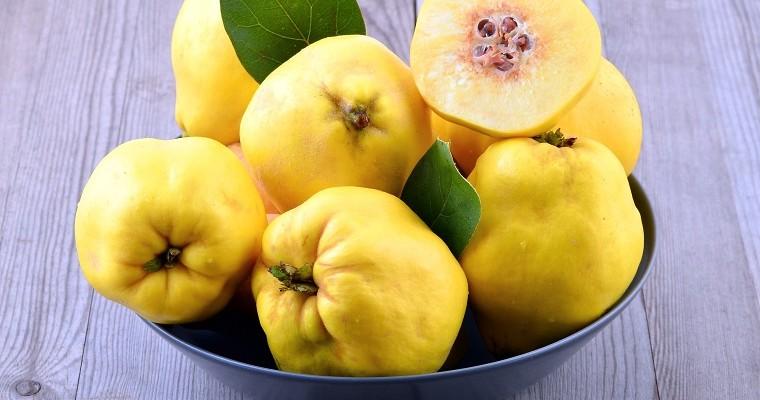
Yellow fruit resembling a cross between an apple and a pear is a common sight in Polish gardens, because quince is not difficult to grow. This one of the oldest trees is sometimes called the Aphrodite tree. And although the hard rind and sour taste disqualify quince fruit as a healthy snack, quince preserves are not only tasty, but also healthy. The fruits have a low glycemic index and are low in calories. They contain more vitamin C than lemon, B vitamins and calcium, potassium, iron, and magnesium – that is why quince is used in preventive home treatments in autumn and winter, also as an alternative to lemon. It will be especially appreciated by people who need to exclude citrus from their diet. The quince fruits ripen in October. However, when the fruit is slightly frosted, it becomes softer and devoid of bitterness. Therefore, the best time to pick quince fruit is right after the first frost. Quinces are covered with natural fluff, which is easy to remove by wiping the fruit. This fluff protects the quince fruit against insects, but also against rotting. The picked quince fruit can be stored for several weeks in a cool place, but it should be remembered not to be adjacent to other fruits, as they give off substances that accelerate the ripening, as well as a very strong aroma that passes through other fruits.
While it is not suitable to be eaten raw, quince is an excellent fruit for jars for the winter. You can prepare jam, jams, syrup, or tincture from it.
Gooseberry
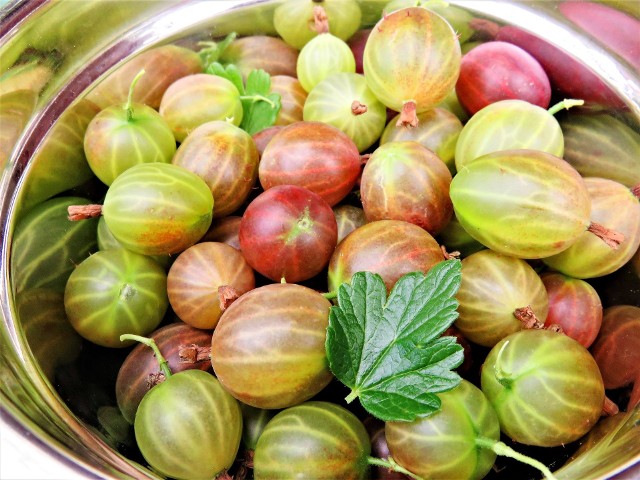
Is a fruit that contains large amounts of vitamin A and lutein, which have a huge impact and importance on visual performance. Therefore, this fruit must be primarily in the diet of people suffering from vision problems, as well as people complaining about constant eye strain, spending a lot of time in front of a computer monitor or TV screen. The high content of vitamin A, lutein and potassium in gooseberries makes this fruit improve the functioning of the brain and the appearance of the skin. It may come as a surprise that gooseberries have more vitamin C than lemon. During the season, ripe gooseberries are certainly best eaten raw, but for the winter, you can prepare a very tasty gooseberry jam from these fruits. To prepare gooseberry jam, the raw material must first be properly prepared. Pre-wash each fruit and remove the stalks and the remains of the bottom of the flower. Any type of gooseberry is suitable for the preparation of preserves, but you have to remember that the fruits should be picked when they are not yet fully ripe.
Sweet Cherries

Nobody needs to be encouraged to eat cherries. Probably the only limitation is the high price for these fruits and the seasonality of their occurrence on the market (we omit those that can be found in supermarkets for astronomical prices). In addition to the undoubted taste qualities, cherries contain many minerals, such as: potassium, phosphorus, calcium, magnesium, sulfur, chlorine, sodium, zinc, manganese, iron, copper, and iodine. Cherries are rich in vitamins C, A, PP and B vitamins (B1, B2, B5, B6, B12). The fruit neutralizes the action of free radicals and thus slows down the aging process of the skin. They cleanse the body of toxins and harmful metabolic products very well. They are alkaline, bringing the acidified body to the acid-base balance. They are recommended for people with gout because eating cherries reduces the amount of uric acid in the blood. A significant amount of potassium contributes to the removal of excess salt from the body, positively influencing the circulatory system and the kidneys. It is best to eat them between meals or even instead of meals, as they are filling and not fattening. People with peptic ulcer disease or a sensitive digestive tract should eat lightly boiled fruit, as fresh cherries remain in the stomach for a long time.
Pears

The history of pears goes back to prehistoric times. They only came to Europe from ancient Persia and Homer himself wrote about them in “The Odyssey”. However, they gained the greatest popularity in Italy. Julius Caesar gave them the nickname “star of the gardens” and it was on his command that the seedlings went to conquered England. The healing properties of pears were most appreciated by the French and Belgians. For years, this delicacy has been used in home medicine chests as a natural remedy for many ailments and as a preventive measure.
The composition of pears contains a lot of minerals – the most potassium. They are also rich in phosphorus, calcium, magnesium, sodium, copper, iron, as well as boron and iodine. This fruit contains fruit acids (malic acid, citric acid), carbohydrates, essential oils, fiber, and pectin’s. It is an excellent source of vitamins A, C, PP and B vitamins (B1, B2, B6). Great for people on a diet good information for all those who care about their body and want a sweet snack. There are only 57 kcal in 100 g of pears.
Therefore, it is worth reaching for them without hesitation because 84 percent they consist of water. In addition, they contain a lot of pectin, i.e., soluble dietary fiber. This ingredient increases its volume under the influence of water, filling the stomach and thus giving a feeling of fullness, which will protect against the temptation of unhealthy and fattening delicacies. Due to the optimal glycemic index (30), they do not burden the pancreas and diabetics can eat them without fear.
Currants
Health properties Regardless of the variety, they have a comparable content of vitamins and minerals, but the darker the fruit, the more different active substances they contain and better protect health. They strengthen immunity The presence of vitamin C and other antioxidants makes currants increase the body’s immunity. Antioxidants also protect the body against the development of inflammation by inhibiting the activation of pro-inflammatory factors in the immune system. Thanks to this, they reduce the risk of chronic diseases or cancer. They also support protection against the development of neurodegenerative diseases, including Alzheimer’s and Parkinson’s diseases.
Black currants
In 100 g of blackcurrant fruit there is an average of 1.3 g of protein, 0.2 g of fat, 14.9 g of carbohydrates and 7.8 g of fiber, and 51 kcal. They are a treasury of vitamin C, which they contain more than rose hips. They also provide the body with B vitamins, vitamin A and minerals such as: magnesium, calcium, potassium, iodine, manganese, iron, chlorine, zinc, copper, boron, iodine, cobalt, molybdenum, and manganese. They contain lutein, pectin’s, and tannins. They are very rich in anthocyanins, polyphenols, which counteract the harmful activity of free radicals. The darker the peel, the more anthocyanins there are.
Red currants
Red currants are a source of B vitamins, vitamins C, E and provitamin A (beta-carotene). They also provide fiber and minerals such as potassium, calcium, iron, manganese, zinc, copper, and magnesium. 100 g of red currant fruit contains an average of 1.1 g of protein, 0.2 g of fat, 13.8 g of carbohydrates and 7.7 g of fiber. 100 g of red currant contains 46 kcal.
White currants
White currant fruits contain large amounts of calcium, potassium, iron, zinc, and manganese. They are also a source of vitamin A, C and E. 100 g of white currant fruit contain on average 1.0 g of protein, 0.2 g of fat, 13.1 g of carbohydrates and 6.4 g of fiber. White currant provides 45 kcal / 100 g.
Plums
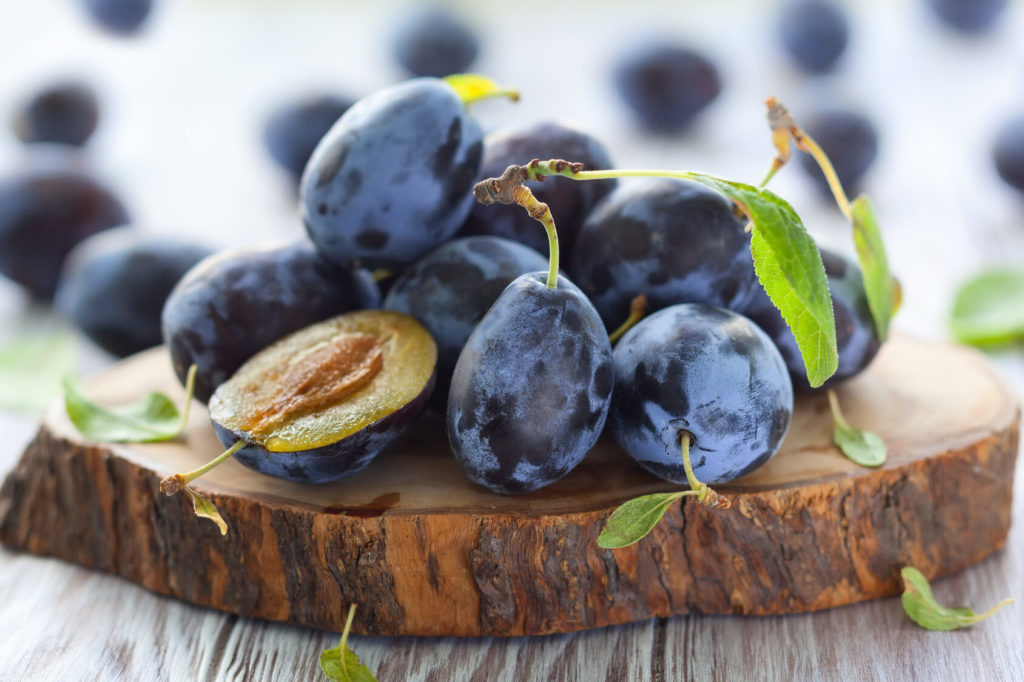
Both fresh and dried are very healthy and have a beneficial effect on our body. The most valuable in this respect are especially dark varieties. They are a treasury of vitamins and minerals. Eating plums affects a number of body functions, such as improving blood lipids, lipid, and glucose metabolism. Pectin’s contained in plums ensure a feeling of satiety, improve, and accelerate intestinal peristalsis, preventing constipation, have a laxative effect, regulate the digestive system, thus reducing the risk of colorectal cancer. The presence of fiber is beneficial for digestion and at the same time helps in weight loss. Plums are also a healthy substitute for sweets and a delicious snack, and added to meats and stews, they give them a unique taste and aroma. Plums are rich in many important ingredients, they contain large amounts of polyphenols – compounds with anti-inflammatory, anti-cancer, anti-atherosclerotic properties that lower blood pressure. The highest concentration of polyphenols is found in the peel of the fruit. Plums, thanks to polyphenols, also show high antioxidant activity (thanks to the abundance of antioxidants: tannins, flavonoids, naringenin, hesperidin, ferulic acid), dark varieties of plums are considered to be a particularly rich source of antioxidants. Plums also contain vitamin A and vitamin E, which is rare in fruit, and plums contain a large amount of antioxidants that inhibit the aging process and the formation of wrinkles. The content of vitamin B6 and magnesium works very well on the nervous system and improves mood (you can read more about B vitamins here). Plums contain significant amounts of vitamin C, which directly affects the immune system, seals blood vessels and is responsible for the good condition of blood vessel walls (be sure to read more about vitamin C here) As well as vitamin K1, which regulates blood clotting, it helps to prevent the appearance of blood vessels on the skin. They also contain a large amount of potassium, which helps maintain normal blood pressure and the proper functioning of the nervous system and muscles, as well as iron, magnesium, calcium, and phosphorus.
Wild Rose

It is a true mine of vitamin C. It has more vitamin C than sea buckthorn, kiwi, oranges, and lemons. Therefore, for years, rosehip preserves have been used for colds. They were also given to strengthen pregnant women. Rosehips contain carotenoids and polyphenolic compounds. They have high antioxidant, anti-cancer, and anti-diabetic potential. They strengthen the body and make blood vessels more flexible. The only problem with wild rose is that it has tiny seeds in it that are difficult to remove and interfere with processing. Rosehips are made into tinctures, wines, purees, syrups, preserves, and jams. Whatever we can think of. After grinding, dried rosehips can be added to fruit and vegetable smoothies or porridge. You can brew them, and drink rose tea.
White mulberry

They received the title of “plant treasure” for its health properties and richness of ingredients. Mulberry fruits appear at the end of July, have a sweet taste because they contain glucose, maltose, fructose, and organic acids (citric and apple). They are also rich in flavonoids – compounds that remove free radicals from the body and have anti-cancer properties. Due to the high content of pectin’s, they affect the proper functioning of the intestines by improving peristalsis. The contained tannins have an astringent effect on the gastrointestinal mucosa. Fresh fruit is especially recommended for stomach and duodenal ulcers. Fresh juice is recommended for anemia, heavy bleeding, and cardiovascular ailments.
Wild Strawberries
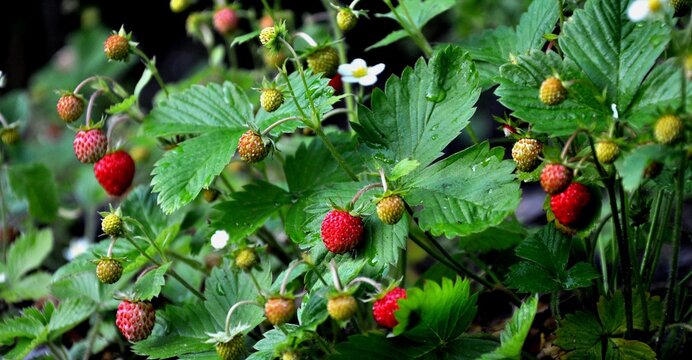
The properties of the fruit are very broad. They are recognized as a source of dietary fiber, vitamins A, C, B vitamins, as well as potassium and polyphenols, which are natural antioxidants. They contain simple sugars, so the daily consumption of fruit should depend on their type. However, it cannot be denied that fruit is an important part of the diet, especially the Mediterranean diet or the DASH diet. We should include them in the daily menu if we want to change eating habits and improve the functioning of the body. Fruits protect against cardiovascular diseases, reduce the risk of cancer or type 2 diabetes, and help control body weight. They have a high nutritional density, while most fruits are low in calories.
Cranberries
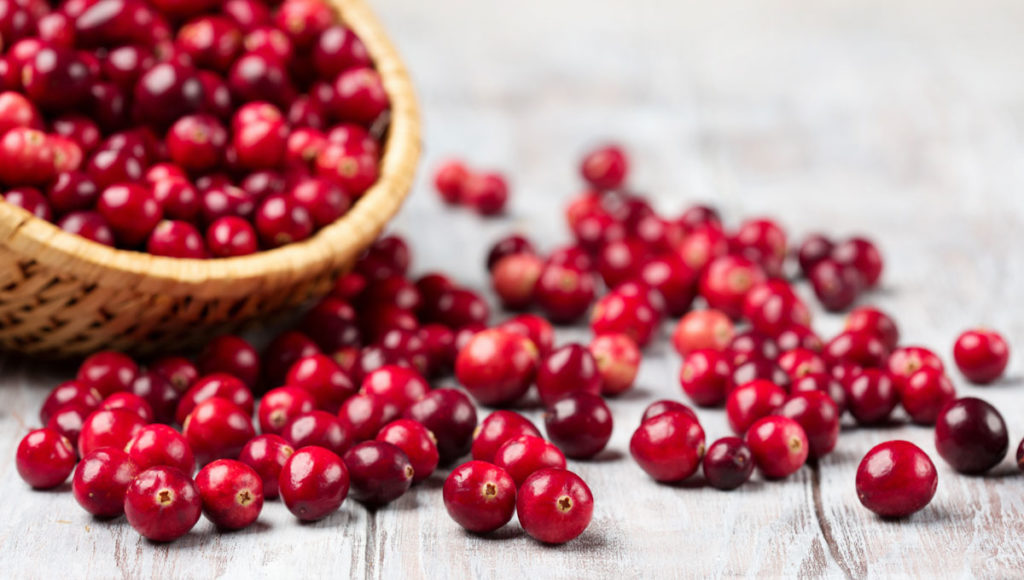
Significant is the high concentration of vitamins, especially vitamins C, E, K, A, B1, B2, B6. Vitamin C is a known antioxidant that protects against many diseases. Vitamin E is a strong antioxidant, protects against free radicals and increases immunity. It also protects against diseases such as atherosclerosis, coronary heart disease, diabetes, obesity, and many others. Among the minerals, potassium, manganese, iodine, and copper deserve special attention. There is also no shortage of calcium, phosphorus, and zinc. Cranberries stay fresh for a long time. Dried, they can survive for several years without losing their nutritional properties. Fresh fruit stored in the refrigerator does not lose its value for about 3 months. All thanks to the benzoic acid contained in them, belonging to the group of carboxylic acids, which is a natural preservative. It prevents the growth of bacteria and fungi responsible for spoilage on the surface of the fruit. Cranberries are more than 85% water. Fruits are rich in dietary fiber, thanks to which the plant supports the digestive process and accelerates metabolism. Importantly, cranberry is a valuable source of flavonoids, i.e., chemical compounds with an antioxidant nature. The specific places of fruit cultivation cause that proanthocyanins accumulate in them – unique chemical compounds that lower blood sugar levels, support the work of the liver, increase the strength of heart contraction, and perfectly destroy pathogenic microorganisms. Cranberry seed oil is rich in omega-3 and omega-6 polyunsaturated fatty acids. Despite the high content of valuable substances for the body, the fruit is low in calories. About 46 calories are contained in 100 grams of the product. Its average glycemic index is 45.
Dogwood

People forget about dogwood, and dogwood is highly hematopoietic. But it also supports the work of the liver and significantly improves metabolism. Dogwood fruits are a treasure trove of iron and therefore may help in the treatment of anemia. They are also recommended for women who have heavy periods. Dogwood also contains potassium, calcium, phosphorus, magnesium, zinc and β-carotene, flavonoids. – It also contains organic acids that support the secretion of digestive enzymes, thanks to which the metabolism is improved. The downside is the huge stone pit. But dogwood can be pickled, for example. The structure is very similar to olives. You can get a delicious fruit olive from it. The fruit of the dogwood is harvested by October. In the past, bushes were planted in court gardens and the famous dogwood was made from the fruit – a coral-colored tincture, slightly acidic. In folk medicine, this tincture was used as a remedy for colds and increasing immunity. Dogwood fruit can be used to make preserves, jams, juices, and liqueurs. They can be eaten raw (after freezing) or used in sauces.
Rowan (Mountain ash)
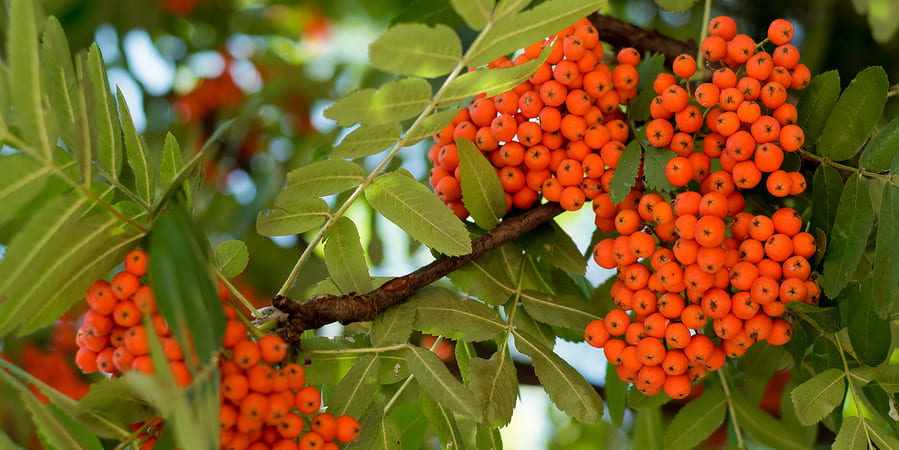
Did you know it is edible? It is true that only after freezing or pouring copiously with boiling water, but still! Raw rowan is not eaten due to the content of parasorbic acid, the consumption of which may lead to food poisoning, i.e., diarrhea and vomiting. But don’t worry – blanching the fruit will remove the acid and the mountain ash will become safe to eat, and even lose its bitter aftertaste. Rowan fruits are tart and probably not everyone will like them … But scientists say that they contain twice as much carotene as carrots! In the kitchen, they are used in the production of tinctures or wines, mousses and juices, jam, and as an addition to game. I especially recommend the wild boar pork neck rubbed with mountain ash – delicious! For processing, large-fruited species are grown that are edible even raw. Rowan has a slightly diuretic effect, has a very positive effect on the mucous membranes and improves the functioning of the digestive system.
Viburnum
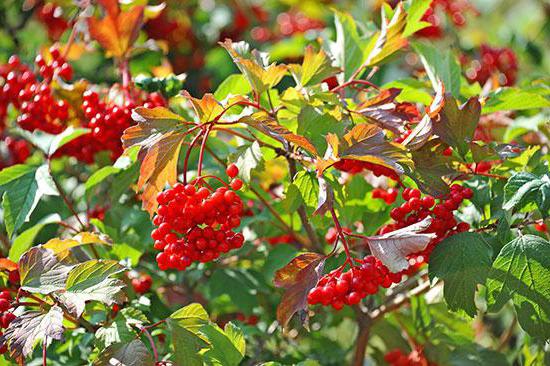
It is a very interesting plant rich in bioflavonoids. By consuming viburnum, you will reduce the level of bad cholesterol. It can also help in coronary diseases and cardiovascular diseases. Unfortunately, it does not smell very good, and this may discourage its consumption. Viburnum is primarily recommended for female conditions because it relaxes the muscles of the uterus and soothes menstrual pain. When menstruation is heavy, the consumption of viburnum slightly reduces bleeding, so it is especially recommended for women. Raw fruits of viburnum are poisonous due to the saponins they contain. Fortunately, they lose their poisonous properties when heat treated and when preparing preserves. Coral viburnum is on the list of plant species under partial protection, which means that it can be harvested in appropriate areas or after obtaining the appropriate permit.
Elderberry
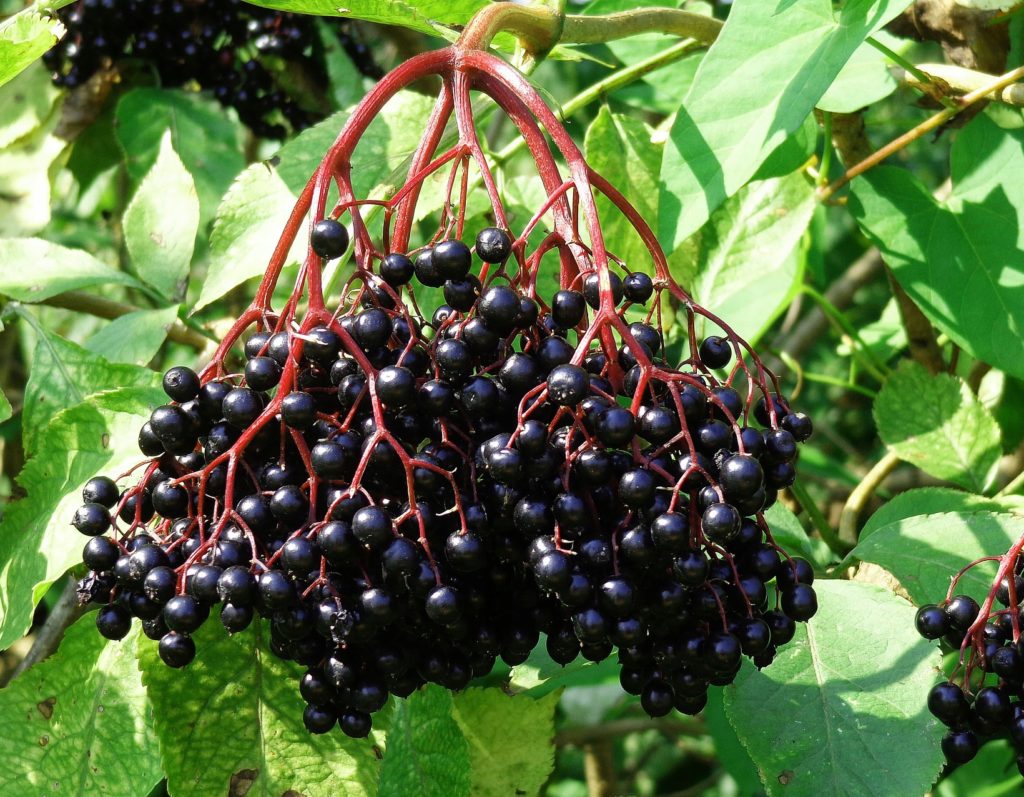
Known also as Black lilac It is best known for its anti-flu properties. Elderberry juice has a strong diaphoretic effect, reduces elevated temperature, and has expectorant properties. Due to the antiviral and anti-inflammatory properties of elderberry, it was used in folk medicine for colds, fever, pharyngitis, laryngitis, and sinusitis. Elderberries also have a diuretic effect. It is believed that they have a detoxifying effect, facilitating the removal of harmful metabolites from the body. Elderberry also has strong antioxidant properties and a positive effect on the level of lipids and blood sugar. However, we cannot eat it raw because it contains harmful sambunigrin. But these harmful properties decompose during thermal processing, so elderberry preserves are safe. We make syrups, teas, tinctures, juices, plum jam, and jams from elderberries.
Aronia/Chokeberry
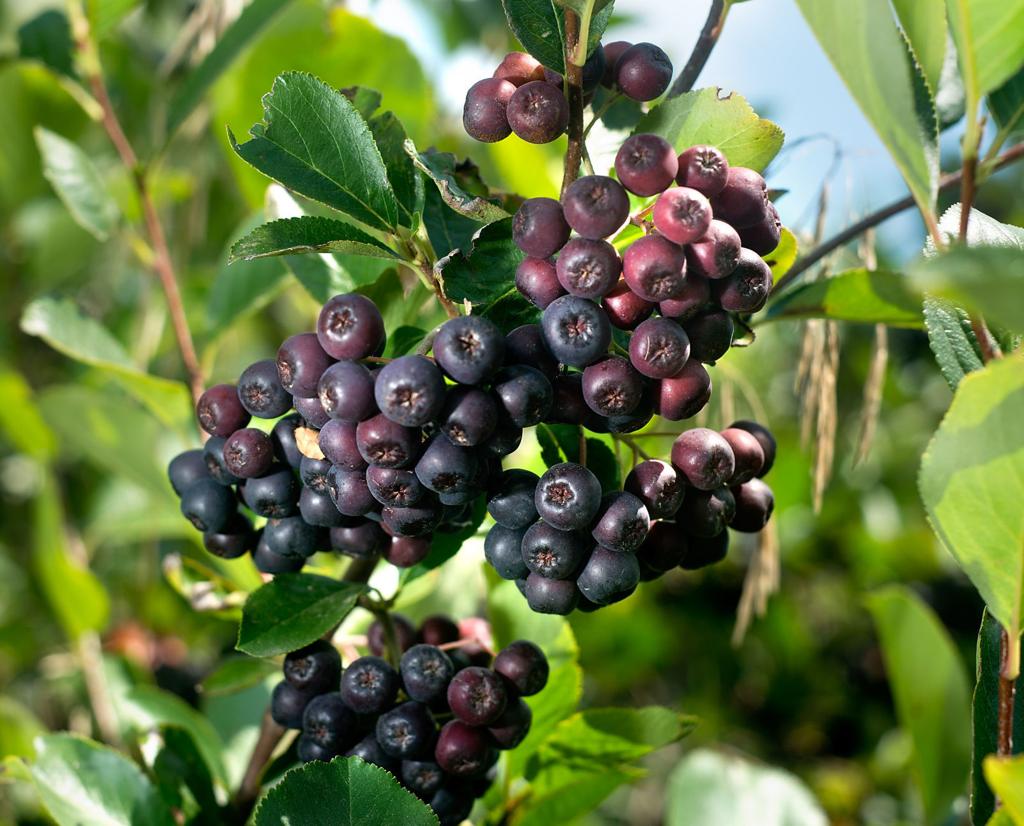
This is a great fruit. We have an abundance of it, but most often it stays on bushes. People don’t pick it; they aren’t interested in its tart taste. At the university, we try to mix chokeberry with other products, such as apples or flax marc, which eliminate this tartness – she adds. Aronia has unusual properties that it owes to bioflavonoids and routine. It is they that ensure good condition of blood vessels. Chokeberry lowers blood pressure, prevents the accumulation of cholesterol, protects against heart disease, and prevents atherosclerosis. It also contains anthocyanins – compounds that fight free radicals, which protects the body against cancer. It has many vitamins, fiber, and pectin, thanks to which it improves metabolism. It is a great free radical scavenger. Chokeberry has great potential, especially in cardiovascular diseases, it is hard to compare with anything. There is actually no competition. If we conduct any research, be it anti-aging, antioxidant, or anything else, chokeberry always wins. You can freeze chokeberry, dry it, extract juice from it, make a puree, mix it. You can mix with apple, add to ice cream, in any composition that comes to your mind. It is good to collect chokeberry after the first frost, then it loses some of its tartness.
Sea buckthorn
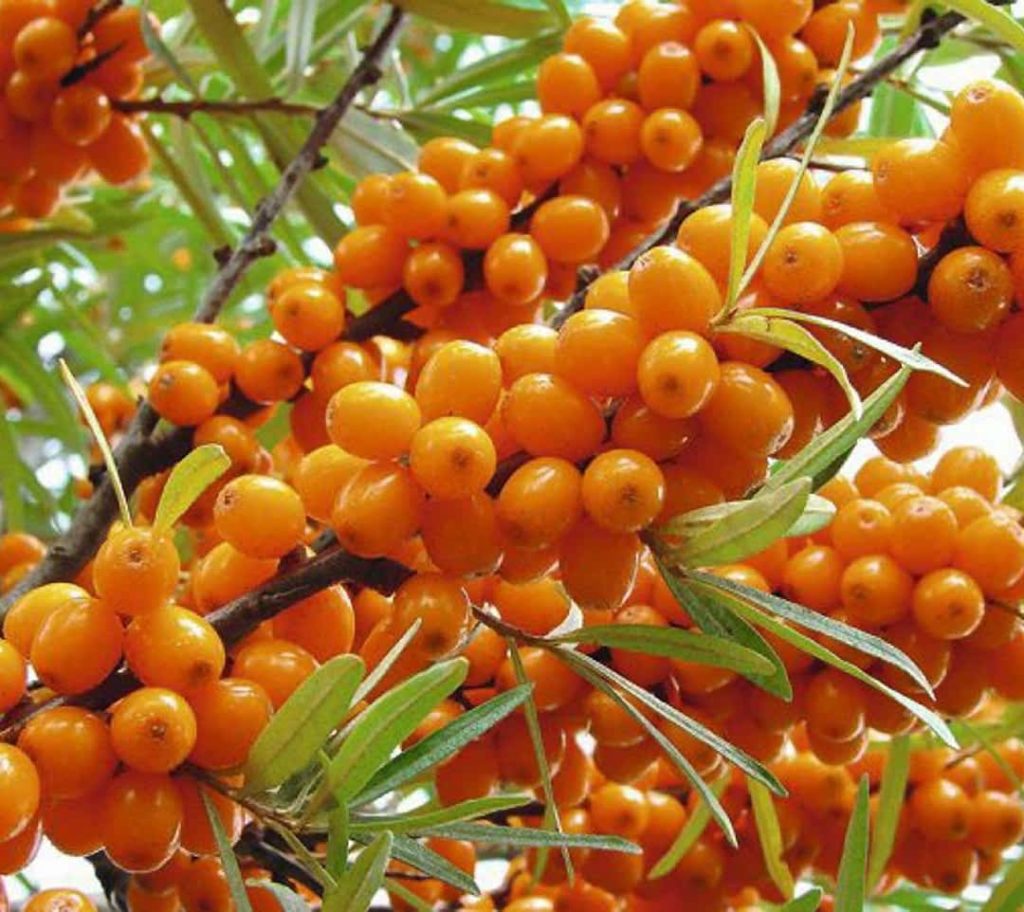
It also returns to favor. Its fruits are very juicy with a tart-sour taste. They contain a lot of vitamin C. Interestingly, sea buckthorn does not contain ascorbinase, an enzyme that accelerates the oxidation of vitamin C, which makes the vitamin resistant to heat treatment. So, you can without fear that we will lose this vitamin, cook sea buckthorn juices, purees, or other preserves. Sea buckthorn is also a rich source of Omega 7. I love eating it raw because it has a slightly pineapple flavor. The biggest problem with sea buckthorn is that it has oils in it and to get a nice consistency and an attractive product, this oil fraction has to be separated from the water one. Sea buckthorn is also a rich source of carotenoids. It is recommended in gastric and duodenal ulcers, as well as in the prevention of diabetes. Sea buckthorn can be used in various ways. You can make juice, jam, tincture, tea, or oil from it. It can be boiled, dried, and roasted. On the other hand, sea buckthorn oil is highly valued, thanks to its omega 7 acid content – it has a rejuvenating effect. That is why it is often used in cosmetics.
Barberry
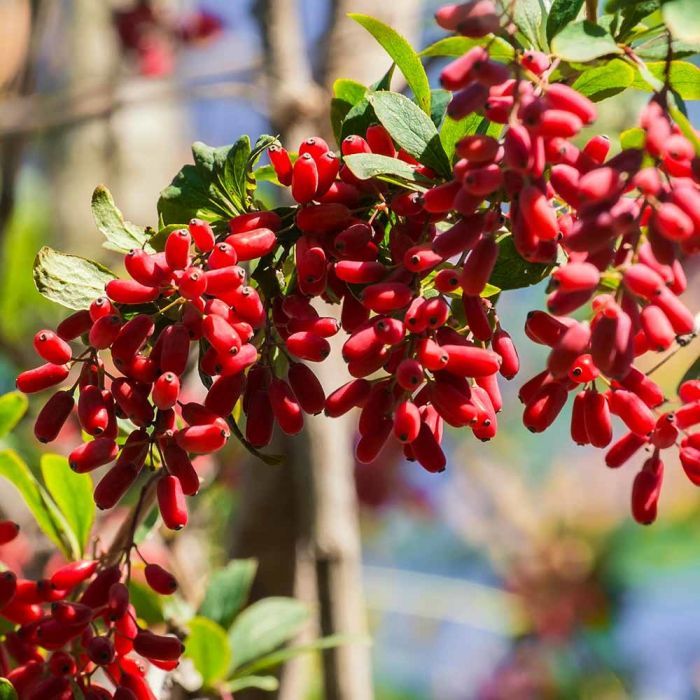
Its fruit with a sour taste is a product rich in vitamins. Barberry is a valuable ingredient in various diets for a reason. Its red, egg-shaped fruits, for more sensible storage, are dried like cranberries, and are harvested in September and October. Barberry can be used for a mixture of muesli and as an addition to tea, which in autumn will support the body by increasing overall immunity. You can prepare syrups, juices, jams, wines, and wonderful tinctures from barberry corals. In addition to its use as an anti-pathological prophylaxis, barberry can be consumed in conditions of fever, bacterial infections, inflammation of the mucous membranes, and to increase the tightness of capillaries (thin blood vessels). A very valuable source of vitamins C and E, pectin, carotenoids, and mineral salts. The routine contained in them improves general well-being when we have a runny nose.
Lingonberry
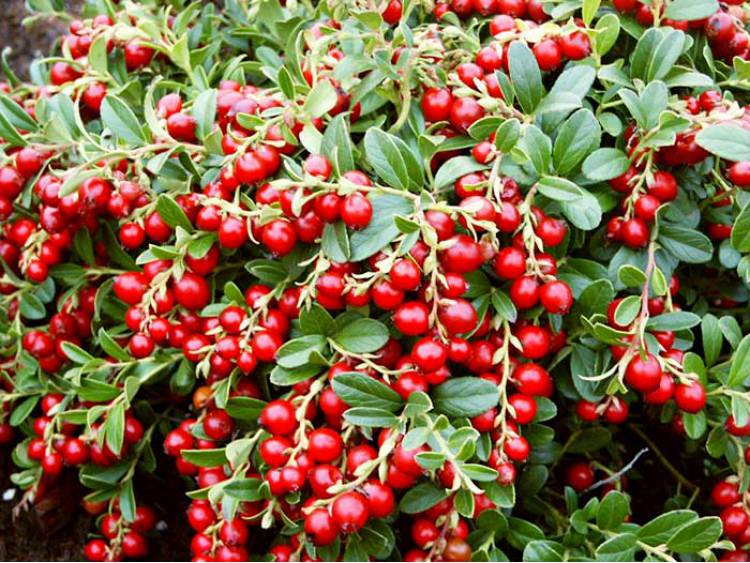
These fruits, very similar in appearance and the specificity of their places of occurrence to cranberry, also have a similar effect to it. They are diuretic, antiseptic and regulate digestive functions. They contain a lot of vitamin C, tannins, pectin’s, phosphates, iron salts, as well as organic acids. You can make jams, juices, and liqueurs with blueberries. They will also work great as an addition to a cheese board washed down with good wine. They have a slightly bitter and sour taste. In natural medicine, blueberry leaves are also used to make infusions. However, in this case you need to be careful, because too much consumption of this decoction can cause vomiting, agitation, muscle spasms and poisoning. In our climate, lingonberries ripen twice: from May to July and from September to October. It’s worth waiting for her!
